William C. Clark House (1887)
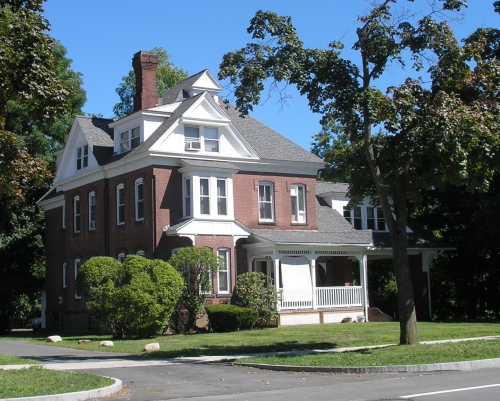
The house at 52 Broad Street in Westfield was built in 1886-1887 for William C. Clark. He served as town selectman and his son, Frederic, was a surgeon who used the house as his home and office.

The house at 52 Broad Street in Westfield was built in 1886-1887 for William C. Clark. He served as town selectman and his son, Frederic, was a surgeon who used the house as his home and office.
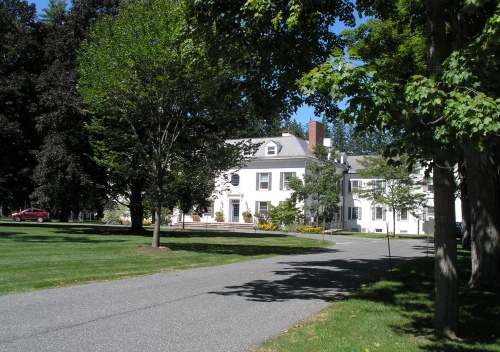
Built circa 1890 and designed by Delano & Aldrich, the Brown Caldwell House is located at 23 Main Street in Stockbridge. In 1930, the house was sold to the Austin Riggs Center. In 1907, while recuperating from tuberculosis in Stockbridge, New York internist Dr. Austen Fox Riggs began to expand his interest in psychiatry and psychology, developing a new and innovative treatment program. He founded The Stockbridge Institute for the Study and Treatment of the Psychoneuroses, which was incorporated in 1919 as the Austen Riggs Foundation. The house was remodeled (its pedimented portico was removed) to become Foundation Inn, one of several historic buildings that comprise the campus of the Austin Riggs Center.

At 173-177 Elm Street in Holyoke is an apartment building called “The Rutland.” It was built circa 1900-1910.
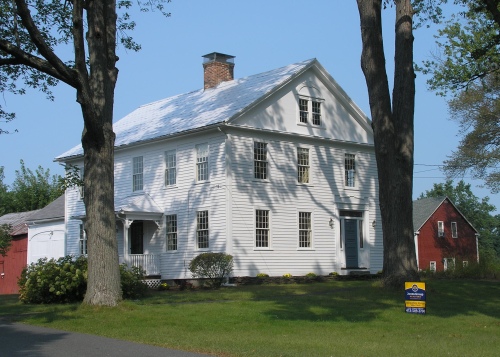
In 1830, Dr. Reuben Bell purchased a lot in Hadley that was occupied by the blacksmith shop of Horace Seymour (d. 1829). Bell then moved the blacksmith shop and built a house (29 West Street) for his son, John Smith Bell, who received title in 1839.
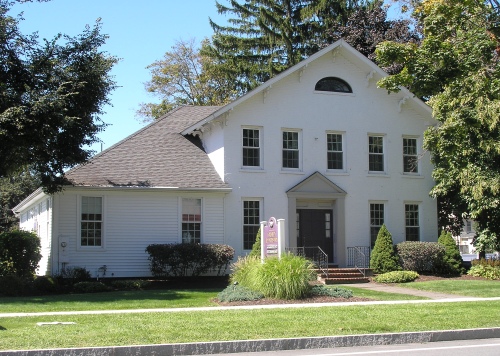
The origins of the building at 79 Broad Street in Westfield are uncertain and complicated by the fact that the house has been completely altered inside. It was built between 1810 and 1830 and is said to have been a blacksmith shop. It was later converted into a residence and is now used as offices. The building is transitional in style from the Federal to the Greek Revival and has an addition and a projecting pediment and brackets that were added in the later nineteenth century. The front doorway was added in the late 1970s.
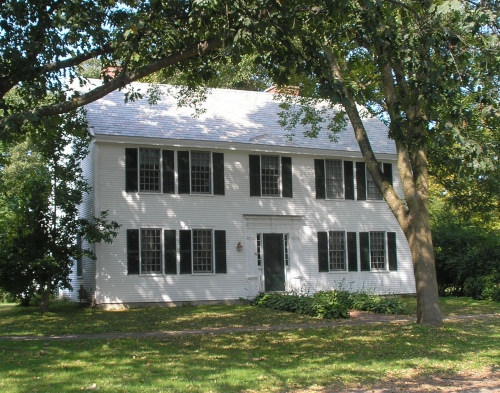
The Thomas Dickinson House in Deerfield is an early center hall house built in 1762. Capt. Thomas Dickinson, a slave owner, led the local militia in the Revolutionary War. There was an unsuccessful attempt to cultivate silkworms on the property in 1852.

The house pictured above (185 Chestnut Street in Clinton) has the look of an American Foursquare house (which were built in the 1890s-1910s), but it’s documented as having been built in 1851 for Franklin Forbes. He was the agent at Lancaster Mills, during which time it became the largest producer of gingham cloth in the world. He also served a term in the State Legislature in 1864 and was a member of the town’s school committee from 1852 to 1877, serving all that time, except for one year, as chairman.